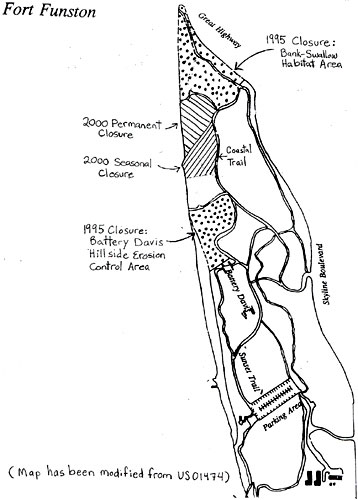
1. Publication in the Federal Register is a procedure that allows the public to scrutinize a proposed rule. Publication is followed by a period during which the public may file written comments on the proposed rule. The comments become part of the administrative record. The purpose is to gather and record the views of all interested parties. After the comment period ends, the agency is not obligated to follow any particular comment, but the agency's decision with regard to the proposed rule many not be arbitrary and capricious in light of the administrative record, of which the comments are a part.
2. Section (a)(2)(iii) of the GGNRA compendium amendment to 36 C.F.R. I provides as follows: The following areas, described below and depicted on maps included as attachments 1-11, are designated as voice control areas where obedient pets, under supervision, may be allowed off leash. Fort Funston and Fort Funston Beach: Beach area south of Sloat Boulevard to San Mateo County line. Pets must be leashed within the trail system of the Bank Swallow Habitat Area and pets are prohibited insides the Battery Davis Hillside Closure. (A.R. US01472, GGNRA, 36 C.F.R. 1, Compendium Amend., signed on July 8, 1996, by Brian O'Neill, Gen. Superintendent).
3. "Threatened" is a less serious, listing than "endangered." The bank swallow is not federally listed as either "threatened" or "endangered."
4. "A.R. means administrative record. This abbreviation will be followed by a bates-number beginning with US, indicating that the document was produced by the government as part of the administrative record.
5. The appended map has been modified to show the approximate boundaries of the new permanent and seasonal closures. It is based on the map appended to the GGNRA compendium amendment to 36 C.F.R. 1, located in the administrative record at USO 1474.
6. As discussed in the "highly controversial" analysis, the government's argument regarding the gross size of the closure is not persuasive. The government argues that the closure encompasses less than three percent of Fort Funston and a much smaller percentage of the GGNRA. The government ignores, however, the previous closure, the relative use and distinctive features of the closed property. It is the quality of the closed land that may support plaintiffs' claim that the closure will prompt "a significant alteration in the public use pattern."
